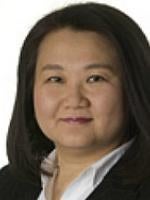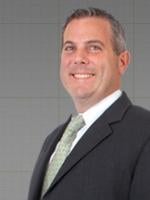On March 4, 2014, the USPTO issued a Guidance memorandum for examination of subject mattereligibility under 35 U.S.C. § 101 in view of AMP v. Myriad (2013) and Mayo v. Prometheus (2012).1 Under the new guidelines, the examiner will first determine whether the claim recites or involvesone or more of laws of nature/natural principles, natural phenomena, and natural products, i.e., judicial exceptions.2 If it does not, the claim is patent eligible, provided it is directed to one of the four statutory patent-eligible subject matter categories. If it does, the examiner will weigh multiple factors to determine whether the claim as a whole recites something significantly different than the judicial exception(s) and thus is patent eligible.
The Guidance identifies the following factors weighing toward patent eligibility: a) Claim is a product claim reciting something that is non-naturally occurring and markedly different in structure from naturally occurring products; Claim recites elements/steps b) that impose meaningful limits on claim scope, so that others are not substantially foreclosed from using the judicial exception(s); c) that relate to the judicial exception in a significant way; d) that do more than describe the judicial exception(s) with general instructions to apply or use the judicial exception(s); e) that include a particular machine or transformation of a particular article, where the particular machine/transformation implements one or more judicial exception(s) or integrates the judicial exception(s) into a particular practical application; f) that add a feature that is more than well-understood, purely conventional or routine in the relevant field.
The Guidance further identifies factors that weigh against eligibility: g) Claim is a product claim reciting something that is not markedly different in structure from naturally occurring products; Claim recites elements/steps h) at a high level of generality such that substantially all practical applications of the judicial exception(s) are covered; i) that must be used/taken by others to apply the judicial exception(s); j) that are well-understood, purely conventional or routine in the relevant field; k) that are insignificant extra-solution activity, e.g., are merely appended to the judicial exception(s); l) that amount to nothing more than a mere field of use.
According to the Guidance, for factors a) and g), the question is whether the product recited in the claim is markedly different from what exists in nature. Not all differences rise to the level of marked differences. The Guidance also provides eight Examples of the eligibility analysis of a variety of process, manufacture and composition claims from the technical fields of recombinant microorganisms, pharmaceuticals, recombinant nucleic acid technology, diagnostic methods, and therapeutic methods.
As the Guidance is not legally binding, we can expect applicants to challenge the USPTO in its implementation of the Guidance for patent eligibility under 35 U.S.C. § 101.
1 Available at http://www.uspto.gov/patents/law/exam/ myriad-mayo_guidance.pdf.
2 The new examination process does not apply to claims involving an abstract idea, which will continue to be examined in accordance with M.P.E.P. § 2106(II).





 />i
/>i

